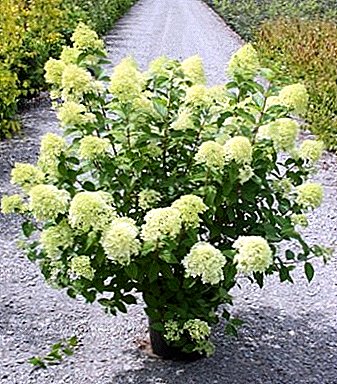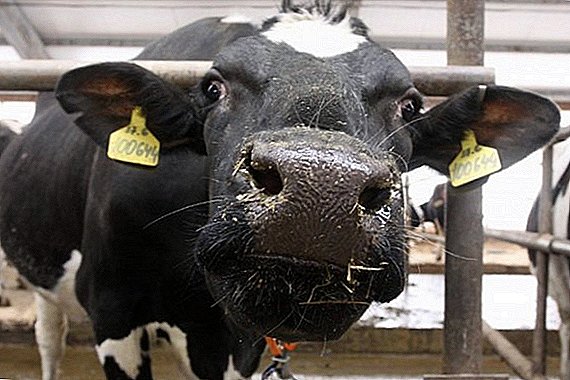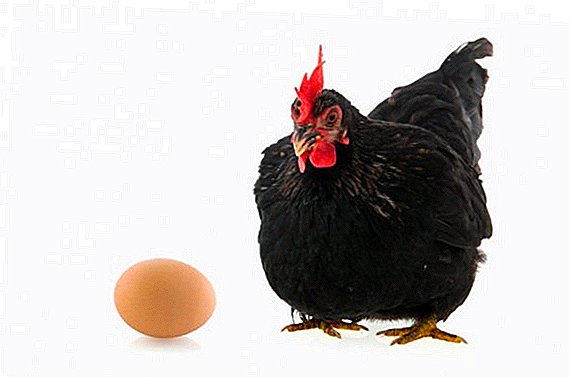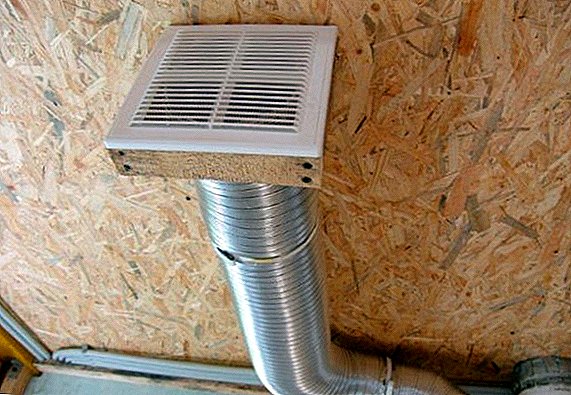 Growth and productivity depend on the health of the chicken. If the bird falls ill or simply becomes uncomfortable, then it gives fewer eggs or stops altogether. In order for the chicken to always be comfortable, it is necessary to properly equip the chicken coop. First and foremost, care should be taken about ventilation. Why she needs to pay maximum attention - we will tell further.
Growth and productivity depend on the health of the chicken. If the bird falls ill or simply becomes uncomfortable, then it gives fewer eggs or stops altogether. In order for the chicken to always be comfortable, it is necessary to properly equip the chicken coop. First and foremost, care should be taken about ventilation. Why she needs to pay maximum attention - we will tell further.
What is ventilation for?
Novice poultry farmers think that there is no need to equip ventilation, if they have acquired the most unpretentious breeds, and the flow of fresh air can be provided by opening the door in the hen house. Yes, this will be enough if you have about a dozen birds. 
But still the effectiveness of this method is quite low.
Proper ventilation helps:
- maintain normal humidity in the room, because dampness provokes the development of fungus;
- eliminate unpleasant odors;
- maintain the temperature at a certain level;
- remove ammonia and carbon dioxide vapors that adversely affect the body of the hens;
- remove dust from the hen house;
- saturate the room with oxygen.
Did you know? In Oakland, California, it is legally forbidden to place chicken coops in urban settings at a distance closer than 20 feet to homes, schools and churches.
In a normal microclimate, the birds will be less sick, and therefore, their care is much easier.

Ventilation methods
There are three types of ventilation in the house. On the peculiarities of each of them we describe below.
It will also be useful for you to learn how to choose a chicken coop, how to build a chicken coop with your own hands, how to build a chicken coop for the winter, how to equip a chicken coop for chickens, how to make a roost and a nest for chickens.
Natural way
Natural ventilation is present in almost any room. The air from the street gets through the small cracks in the windows, doors and in the same way leaves the room. But to update the air masses of these flows is not enough.
It is necessary that the window was with a window leaf and placed correctly (above the door or above the roost). When you open the door fresh air will go inside, and the open window will go stale.
In warm time, this method of ventilating the room is quite effective, but only on condition that there are up to a dozen chickens in the hen house. In winter, however, you will have to spend a lot of resources on heating the house. 
Supply and exhaust system
This method is much more effective than the previous one, and is designed for a large population of birds (more than 20, but less than 100). By the principle of action it is similar to airing. Only in this case, fresh air enters through a long pipe and exits through the other one above. Air circulation occurs naturally. 
Mechanical system
This is the most effective, but also the most costly way of ventilating the house. It is beneficial to use only in poultry farms, where livestock passes for a hundred.
Here, as well as the supply and exhaust system, two pipes are used. But the movement of air takes place by force of a fan. It creates more powerful flows, which means that the movement of air masses takes place faster.
The fan can be controlled manually or through a system of sensors outputted to the control panel. 
Supply and exhaust system
This ventilation system can be made independently. What is needed for this, and how to do everything, set out below.
You may also be interested to learn how to make ventilation in the cellar and in the pigsty.
Necessary materials
You will need:
- 2 two-meter pipes with a diameter of 200 mm (material does not play a role);
- jigsaw;
- umbrella for protection against precipitation;
- clamp;
- polyurethane foam;
- staples.
For the winter will not be superfluous to purchase a check valve. It will not let in cold air when ventilation is not working. 
Important! If you use metal or plastic pipes for ventilation, you need to take care of their insulation, so that in the winter the internal walls of the pipes do not accumulate and the condensate does not freeze, preventing air movement.
Instruction
- First of all, mark where the ventilation holes will be located. Supply should be away from the perch and nests, exhaust - over the roost.
- In the roof of the chicken coop, make two holes with a diameter of about 25-30 cm. But it is better to make them as close as possible to the pipes. Holes are made on opposite sides of the roof opposite each other.
- Take two pipes of the same section and equal in length and install in the holes. It is advisable to choose a pipe with a circular cross section - they are more efficient in operation.
- The lower end of the first pipe should be at a height of 20-30 cm from the floor. The upper end should rise 30-40 cm above the roof.
- The other pipe should be positioned in such a way that there is 30 centimeters between its lower end and the ceiling. The top should protrude above the roof for 100 centimeters or more.
- Pipes must be well fixed on the roof. Usually they are located near the rafters, but you can still fix the brackets.
- To prevent precipitation from entering the house through pipes, umbrellas are installed at the outer ends or an L-shaped bend is made using a knee with a 90 degree angle. You can also install a filter so that dust and dirt do not enter the room.

Mechanical system
When creating a mechanical system, the fan can be installed in one of the pipes either on the wall / ceiling or in a window. The last option is the easiest and most economical.
Important! During the execution of work it is necessary to be extremely careful not to damage the ceiling and walls. The slightest cracks will interfere with the normal operation of ventilation.
Necessary materials
You will need:
- 2 two-meter pipes with a diameter of 200 mm (any material);
- jigsaw;
- fan;
- wires;
- switch;
- insulating tape;
- umbrella for protection against precipitation;
- clamp;
- polyurethane foam;
- staples.

Or:
- fan;
- the wire;
- plywood;
- switch;
- screws;
- insulating tape.
The last list of materials needed for mounting the fan in a window or wall.
Find out also how to properly maintain chickens in the winter season, how best to heat the chicken coop in winter, what kind of lighting should be in the chicken coop in winter.
Instruction
If you plan to install the fan in the pipes, then the procedure is similar to the creation of the supply and exhaust system. It only adds wiring to the fan and the installation of the switch.
The fan can be installed both in one of the pipes, and in both (depending on what you want to achieve). If you need an intense flow of fresh air, the fan is installed in the flow tube. If powerful traction is needed, it is installed in the exhaust. 
It is desirable to lay the wiring to the fan outside the house, as the microclimate that is not suitable for it is formed inside. Wiring must be well insulated.
The switch is installed in two types: switching on both the light and the hood or on two buttons to control the lighting and ventilation separately.
When mounting simplified mechanical ventilation you need:
- Make holes in the opposite walls of the coop under the fan or, if there are windows, you can install them.
- To install in the pane window in the size of the glass cut a rectangle.
- Mark and cut a hole for the fan.
- Insert the element into the frame and fix with screws.
- Insert the fan into the hole. Its installation depends on the design of the device.
- Connect the fan to the power supply.

This type of ventilation can be used briefly, including for 2-3 hours per day.
Did you know? A standard house is a one-story building, however some poultry farms sometimes use high-rise buildings for birds. For example, near Kiev, in the Tver region and Latvian Ietsava, there were poultry houses in as many as six floors.
We introduced you to the existing types of ventilation in the hen house and told you how to do it yourself. Choose the method you like and start construction work as soon as possible, because clean indoor air is a guarantee of the health of your birds.












